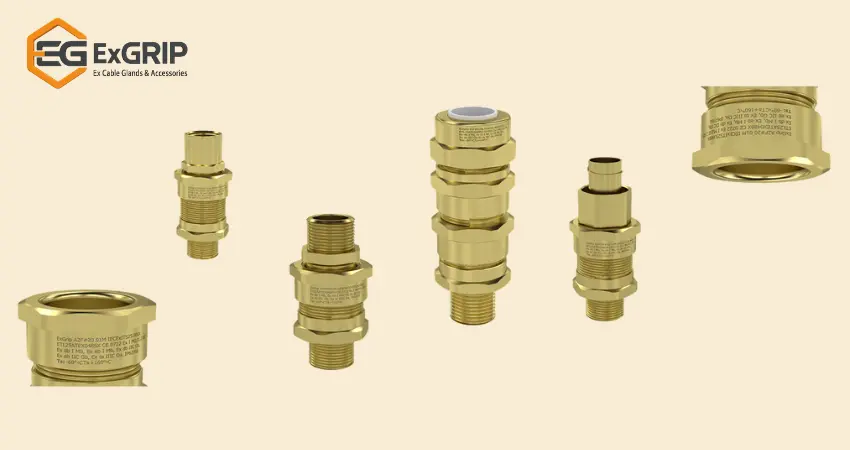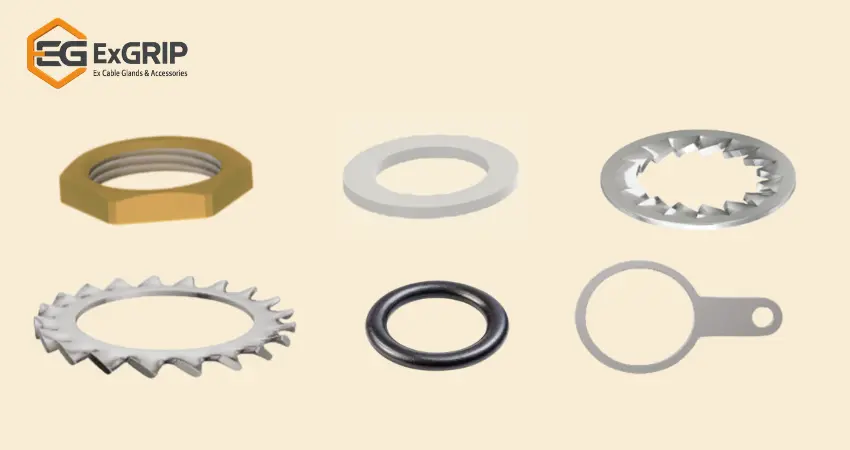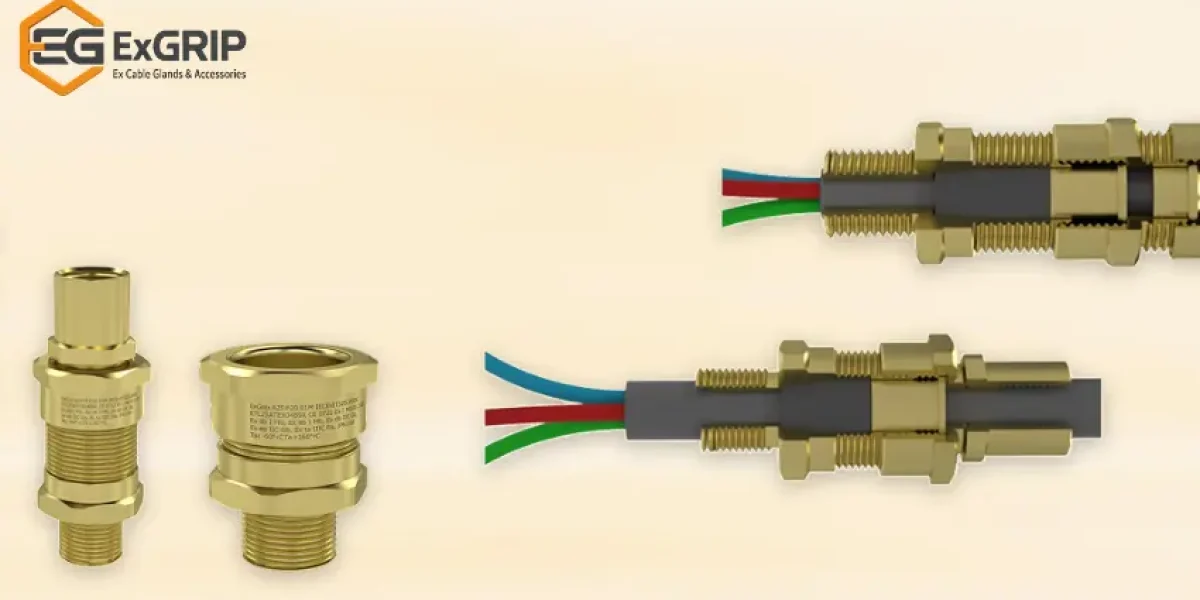If you’ve ever seen how cables are safely connected to machines or control panels, there’s a small but important part making it all secure: the cable gland. In this blog, we’ll explain in simple language what is cable gland, how it works, where it’s used, and why it’s important.
What is a Cable Gland?
A cable gland is a small device that attaches to the end of a cable and helps it connect securely to electrical equipment. It keeps the cable tightly in place, stops it from getting pulled out, and protects the equipment from dust, dirt, water, or gas.
To put it simply, if a cable is like an arm, the cable gland is like the cuff of a shirt holding it neatly and tightly where it ends.
What Does a Cable Gland Do?
The cable gland is not just for holding the cable. It does multiple jobs:
- Seals the cable opening so water and dust can’t get in.
- Prevents damage by stopping the cable from moving too much or bending at a bad angle.
- Protects against electric shock by grounding (earthing) the cable, especially if it’s an armored type.
- Maintains safety standards, especially in factories and explosive areas.
Types of Cable Glands

Based on Function:
- Armoured Cable Glands: Used when the cable has a metal covering.
- Unarmoured Cable Glands: For standard electrical cables without metal layers.
- Waterproof Cable Glands: Keeps moisture and water out.
- Heat-Resistant Cable Glands: Used in hot areas.
- Metric and NPT Cable Glands: These refer to the thread type used to connect the gland.
Based on Industry Application:
- EMC Cable Glands: Blocks electrical interference.
- Marine Cable Glands: Designed for ships or wet environments.
- Explosion-Proof Cable Glands: Used where fire or explosion is a risk.
Based on Material:
- Metal (Brass, Stainless Steel, Aluminium): Strong, durable, and good for outdoor or harsh conditions.
- Plastic or Nylon: Lightweight, cheap, and mostly for indoor use.
Based on Certification:
- ATEX and IECEx Certified: Approved for explosive zones.
- PESO Certified: Safe for flammable environments in India.
Plastic vs. Metal Cable Glands
Choosing between plastic and metal cable glands depends on where and how you plan to use them. Here’s a side-by-side comparison to help make the decision easier:
| Feature | Plastic Cable Glands | Metal Cable Glands |
|---|---|---|
| Material | Nylon or other polymers | Brass, Stainless Steel, Aluminium |
| Weight | Lightweight | Heavier |
| Cost | More affordable | More expensive |
| Strength | Moderate, not ideal for harsh conditions | Depends on metal; stainless steel is highly resistant |
| Corrosion Resistance | High (non-metallic) | Depends on the metal; stainless steel is highly resistant |
| Conductivity | Non-conductive | Conductive – allows grounding |
| Best For | Indoor, general-purpose, small projects | Outdoor, industrial, hazardous environments |
| Durability | Lower – prone to wear under heavy use | Highly long-lasting in tough conditions |
Metal glands are often preferred in industrial or outdoor settings, while plastic is suitable for lighter indoor applications.
Why is Choosing the Right Cable Gland Important?
Choosing the correct cable gland is not just a formality it’s essential for safety and performance. A mismatch can result in cable damage, system failure, or even serious accidents.
For instance, using a non-sealed gland in a wet environment can let water seep into the equipment, which may cause short circuits or corrosion. Similarly, if a gland doesn’t properly clamp armored cable, it can lead to poor grounding or even an electric shock. These problems can lead to costly downtime or dangerous failures.
That’s why understanding your working environment, cable type, and technical needs is key to making the right choice.
How to Select the Right Cable Gland
Selecting the right cable gland isn’t difficult, but it requires a few checks:
- Installation Location: Will it be installed indoors or outdoors? Outdoor environments may need waterproof and UV-resistant glands.
- Cable Type: Know whether your cable is armored, unarmored, flexible, or rigid. Different cables need different gland types.
- Cable Size: Measure the cable’s outer diameter and choose a gland that matches it closely to ensure a tight fit.
- Material Consideration: For corrosive environments, stainless steel might be better than brass or nylon.
- Certification Requirements: In hazardous locations, use only glands that meet standards like ATEX or IECEx.
Considering these factors helps avoid poor installations, improves longevity, and reduces the risk of failure.
How to Install a Cable Gland
Proper installation of a cable gland ensures its performance. Here’s a step-by-step process:
- Disassemble the gland: Separate all parts (body, seal, washers, and locknut).
- Prepare the cable: Cut the outer jacket neatly, exposing the length required. Avoid damaging the insulation or conductors.
- Insert gland parts: Slide the components over the cable in the correct order.
- Mount the gland: Place the gland body through the panel or enclosure hole, then tighten the locknut.
- Tighten the seals: Secure the outer and inner seals to compress and hold the cable tightly.
- Verify the seal: Gently pull the cable to ensure it’s firmly fixed and test the sealing (IP rating) if needed.
Repeat this process with care and always follow the manufacturer’s instructions for best results.
Popular Cable Gland Types for Armoured Cables
There are several types of cable glands specifically designed for armoured cables, each with unique applications:
BW Glands :
Mostly used in dry indoor environments. They provide mechanical retention but limited environmental protection. Ideal for general electrical panels.
CW Glands :
Designed for use in outdoor or dusty conditions. They clamp the armour and seal the outer sheath, offering better ingress protection.
E1W Glands :
Offer two levels of sealing both on the inner and outer sheath. This makes them perfect for outdoor installations where dust and moisture are common.
CXT Glands :
These are suitable for flexible or braided armoured cables and are often used in industrial setups requiring vibration resistance and high ingress protection.
Choosing the right type depends on where and how the cable is being used.
Don’t Forget Cable Gland Accessories

Accessories are just as important as the gland itself. They ensure complete sealing, grounding, and mounting. Here are some common ones:
Locknuts: Used to secure the gland to the enclosure or panel. Serrated locknuts can provide a better grip.
Earth Tags: These create a reliable connection to ground for armored cables. They are crucial for safety in electrical faults.
Shrouds: Plastic or rubber covers that provide an extra layer of environmental protection and improve appearance.
Sealing Washers: Help maintain IP ratings by sealing the gap between the gland and the enclosure.
Skipping accessories can compromise the effectiveness of even the best cable gland, especially in high-risk environments.
Final Thoughts
A cable gland might be small, but it plays a big role in protecting cables, machines, and people. Whether you’re doing electrical work at home, in a factory, or in a shipyard, picking the right cable gland will make everything safer and more reliable.
We hope this detailed guide helps you understand everything about what is cable gland is, why it’s important, and how to use it the right way.
If you’re looking for high-quality, certified cable glands at competitive prices, you’re in the right place. We manufacture and supply a wide range of cable glands for all industries and applications. Contact us today to discuss your requirements and get a custom quote.
For more insights and updates on web design for small businesses, follow us on Instagram, Facebook, LinkedIn, and Youtube.

